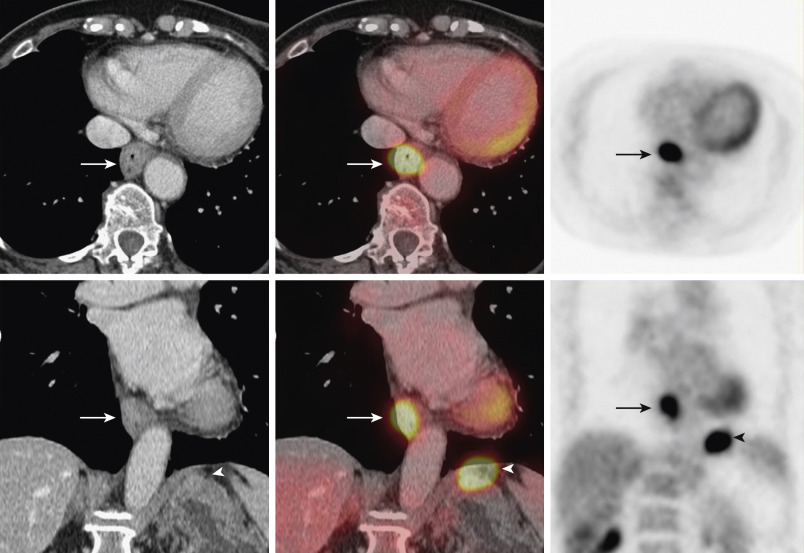Physical Address
304 North Cardinal St.
Dorchester Center, MA 02124
The focus of this chapter is on positron emission tomography (PET) and PET and computed tomography (PET/CT) applications specific to the tumors arising in the gastrointestinal tract and female gynecologic organs, excluding systemic malignancies such as lymphoma and melanoma, which can manifest in the abdomen ( Figure 13-1 ), as well as other approved extraabdominal malignancies that can metastasize to the abdomen, such as lung and breast cancers.
Because it is mainly an intrathoracic organ, the esophagus will not be discussed except to note that the incidence of adenocarcinoma of the distal esophagus and gastroesophageal junction has increased dramatically in recent years, currently accounting for the majority of new cases of esophageal cancer. The Centers for Medicare and Medicaid (CMS) guidelines in the United States approve fluorodeoxyglucose (FDG)-PET, and thus PET/CT, for the diagnosis, staging, and restaging of patients with esophageal cancer, including both squamous cell carcinoma and adenocarcinoma subtypes ( Figure 13-2 ).

Colorectal cancer is the malignant abdominal tumor that has been extensively investigated with FDG-PET and PET/CT. The CMS guidelines in the United States have approved Medicare coverage for FDG-PET, and thus PET/CT, for the diagnosis, staging, and restaging of patients with colorectal cancer.
FDG-PET is sensitive for detecting primary colorectal carcinoma (95% to 100%), but it has unacceptably lower specificity than conventional modalities at initial staging. In practice, FDG-PET is therefore rarely specifically used for the diagnosis of colorectal cancer, although it may incidentally detect such a tumor as PET, and especially PET/CT, becomes more extensively used. At the primary site, however, the positive predictive value of PET is lower than the negative predictive value, owing to the false-positive FDG-PET findings of both physiologic bowel activity and inflammatory processes.
In staging patients with colorectal cancer, FDG-PET and PET/CT are mainly used to assess regional lymph node involvement and distant metastases. However, FDG-PET has been shown to have a very low sensitivity of between 22% and 29% for regional lymph node metastases, with CT also demonstrating low values (29%). However, FDG-PET specificity was superior (96% vs. 85%). False-negative findings in regional metastatic lymph nodes on FDG-PET are considered to be due to low sensitivity for microscopic involvement of small lymph nodes or occasionally as a result of increased FDG uptake by the primary tumor, which masks the immediately neighboring structures.
Most patients with colorectal cancer at initial staging have disease limited to the colon or to regional pericolic or mesenteric lymph nodes. For patients with early colorectal cancer, surgery is usually performed with the intention to achieve cure. However, distant metastatic disease may necessitate the surgery for complications, which include hemorrhage, obstruction, and perforation. Given this role of surgery in both regional and advanced disease, surgical and pathologic criteria define the colorectal cancer staging classification.
The standard tumor, node, metastasis (TNM) classification is currently advocated by the American Joint Committee on Cancer. Because of inherent technologic limitations, imaging modalities today are generally unable to match the diagnostic staging information provided by surgical and pathologic findings. PET cannot provide an accurate T-stage determination necessary for TNM nomenclature, in which exact depth of invasion is the primary parameter. PET is usually accurate only in cases of gross serosal penetration and invasion of neighboring structures. CT gives more exact structural information but, unfortunately, usually also cannot adequately resolve the bowel wall layers. N staging necessitates evaluation of mesenteric nodes as well as pericolic nodes, which are frequently small and lie beside the primary tumor. Furthermore, pericolic nodes again are often involved microscopically by tumor, which usually can be diagnosed only by histopathologic evaluation. Despite the clear superiority of surgery and histopathology at TNM staging, preoperative imaging detection of nodal or organ metastases is important in guiding the general management toward palliation or curative tumor resection. Notwithstanding its staging limitations, PET/CT offers combined metabolic and structural information that is particularly useful in cases of more advanced local disease.
Become a Clinical Tree membership for Full access and enjoy Unlimited articles
If you are a member. Log in here